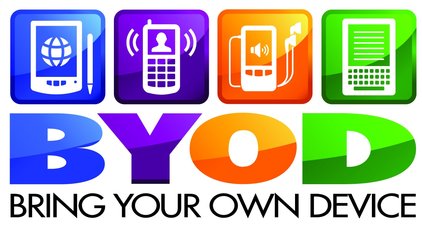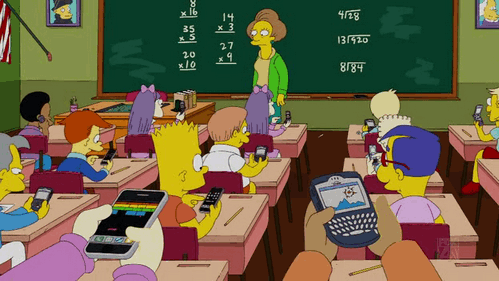MS. ELIAS TECHNOLOGY @KEEPINGUPWIYHTECHNOLOY
Don't Just Ban ~ Make A Plan
Do device bans undermine 21st Century learning?
Digital devices put the world at our students' fingertips, whether with their own cell phones or with school-provided computers and tablets. But, along with opportunities for powerful learning come the risks -- and realities -- of distraction. So, what are the best ways to manage digital distractions in the classroom?
Digital devices put the world at our students' fingertips, whether with their own cell phones or with school-provided computers and tablets. But, along with opportunities for powerful learning come the risks -- and realities -- of distraction. So, what are the best ways to manage digital distractions in the classroom?
Don’t make a ban -- have a plan!
Whether it’s smartphones or school provided computers and tablets, digital devices can take learning in powerful new directions. But along with these tools comes digital distraction. Outright device bans are tempting but can create more conflicts than they’re worth. Instead, advocate for students’ use of digital tools and model productive 21st-century learning. It’s an opportunity to shift students’ thinking about responsible tech use in the classroom and beyond.
Three Essential Strategies:
1. Give kids meaningful things to do when they’re on devices. Capitalize on tools that promote higher-order thinking and learning. Look for platforms that encourage digital creation, online collaboration, communication outside the walls of the classroom, and new perspectives for critical thinking.
2. Set appropriate boundaries for in-class device use. Find the right middle ground for you and your students, and make these boundaries clear. Consider the needs of your classroom as a whole, and differentiate boundaries for students with specific learning differences.
3. Build lessons that have a predictable flow of tech and non-tech activities. Incorporate both screen-based and more traditional activities in your daily lessons.
Source: www.commonsense.org
Whether it’s smartphones or school provided computers and tablets, digital devices can take learning in powerful new directions. But along with these tools comes digital distraction. Outright device bans are tempting but can create more conflicts than they’re worth. Instead, advocate for students’ use of digital tools and model productive 21st-century learning. It’s an opportunity to shift students’ thinking about responsible tech use in the classroom and beyond.
Three Essential Strategies:
1. Give kids meaningful things to do when they’re on devices. Capitalize on tools that promote higher-order thinking and learning. Look for platforms that encourage digital creation, online collaboration, communication outside the walls of the classroom, and new perspectives for critical thinking.
2. Set appropriate boundaries for in-class device use. Find the right middle ground for you and your students, and make these boundaries clear. Consider the needs of your classroom as a whole, and differentiate boundaries for students with specific learning differences.
3. Build lessons that have a predictable flow of tech and non-tech activities. Incorporate both screen-based and more traditional activities in your daily lessons.
Source: www.commonsense.org

Ways To Use Smartphones In The Classroom to Communicate
- Use FaceTime on the iPhone to add outside audience members during class discussion or learning activity.
- Allow students to read from their smartphones to read books.
- Allow students to video or audio record your assignment instructions.
- Have a silent discussion via Todaysmeet.com.
- Use Google Translate to break down language barriers.
- Use Instagram to display class projects.
Ways To Use Smartphones In The Classroom To Create
- Write with apps such as My Writing Spot and Evernote.
- Use dictionary and thesaurus apps.
- Use Dragon Dictation for struggling writers.
- Create “How-To” guides using apps such as SnapGuide.
- Write to Blog Post via the Blogger app.
Ways To Use Smartphones In The Classroom To Coordinate/Organize
- Share spreadsheets of notes with Google Drive.
- Manage students’ knowledge of lessons by having them take a quiz directly from their phones via Google Forms.
- Allow students to check their grades via on-line with PupilPath.
- Have students question peers outside class and send their recorded opinions to Voicethread.
- Use apps like Calendar to plan study times and project times and to schedule homework.
- Use the calculator app to for classroom calculations.
WAGNER'S CELLPHONE POLICY
Your browser does not support viewing this document. Click here to download the document.

